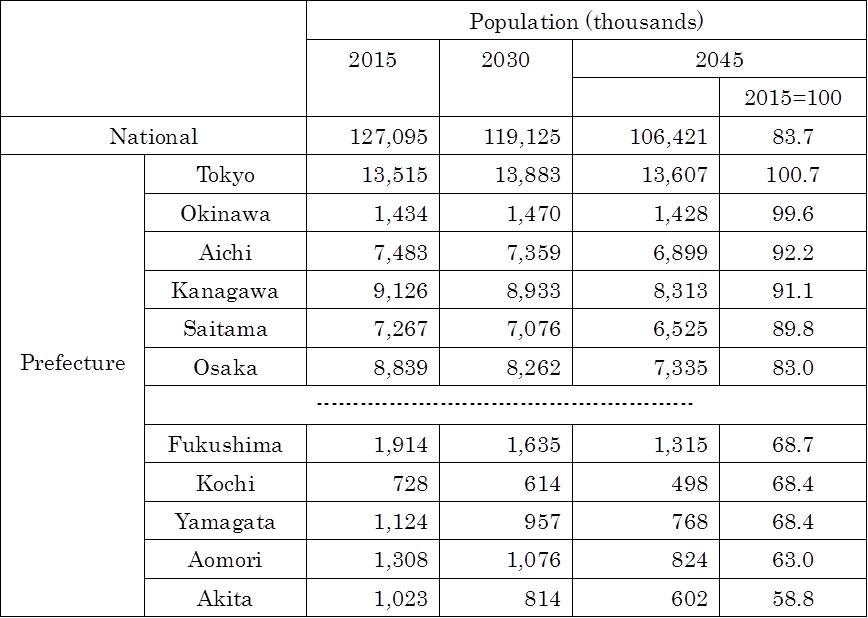Column Finance and the Social Security System 2018.05.10
【Aging, safety net and fiscal crisis in Japan】No.101: Population Projection by Region
In March 2018, the National Institute of Population and Social Security Research released a report on the population projection by region. According to the population projection (April 2017) announced by the institute, Japan's population is estimated to decline by 16.3% from 127,095,000 in 2015 to 106,421,000 in 2045. The new estimate is a breakdown of the previous estimate made by prefecture and municipality.
There are 47 prefectures and 1,798 municipalities in Japan. As shown in Table 1 and Figure 1, only the Tokyo metropolitan area will exceed the population of 2015 as of 2045. The population of Akita prefecture will decline by 41.2% during the same period. Moreover, in more than 70% of municipalities, the population in 2045 will decline by more than 20% compared to the 2015 population.
The percentage of the population aged 65 or over in relation to the total population will increase from 26.6% in 2015 to 36.8% in 2045. As for the percentage of the elderly, Akita is the largest (50.1%) and Tokyo is the smallest (30.7%) among 47 prefectures. The number of municipalities where the elderly population represents more than 50% of the total population will increase from 15 in 2015 to 465 in 2045.
Table 1: Population by Prefecture

Source: National Institute of Population and Social Security Research
Figure 1: Population index in 2045 (Population in 2015=100) by prefecture

